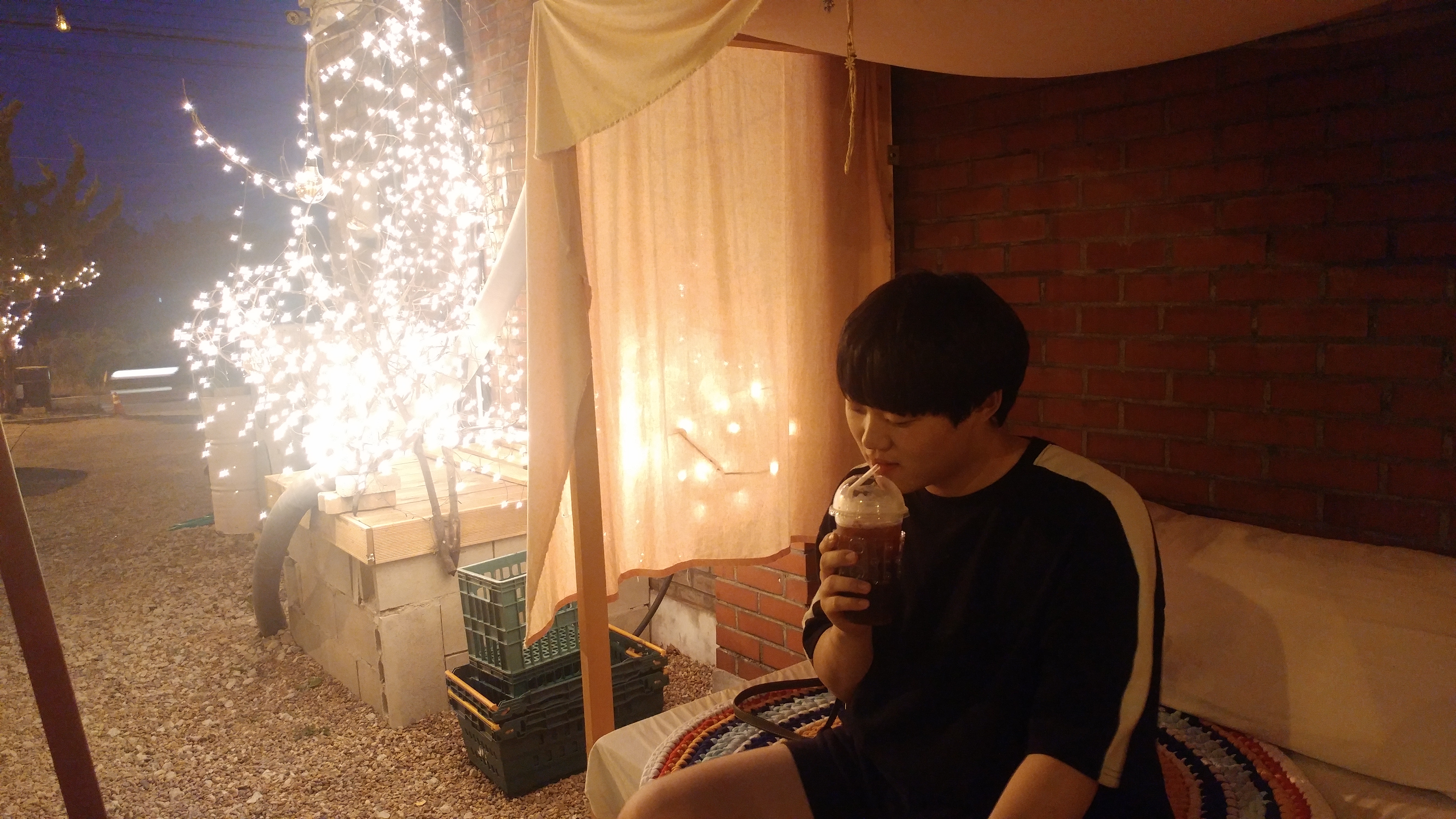수식이나 그림에 대한 설명은 해당 그림, 수식 밑에 설명을 적는 것으로 통일한다.Optical flow와 Direct method는 시간 경과에 따른 이미지 간 픽셀 이동을 계산하는 알고리즘이다. 다만, 두 알고리즘은 2D 상의 이미지 픽셀(Optical flow)을 추적하냐, 3D 상에서 카메라의 움직임(Direct method)을 추적하냐의 차이가 있다.
! Optical flow: 2D 상의 이미지 픽셀을 추적
! Direct method: 3D 상의 카메라 움직임을 추적Key assumtions
- Brightness consistency (밝기 향상성)
- 객체 상의 픽셀(밝기)은 프레임이 바뀌어도 그 값이 변하지 않는다.
- Small motion (작은 움직임)
- 객체는 프레임 사이에서 크게 움직이지 않는다. 다른 시각으로 생각하면, 객체보다 사간이 상대적으로 빠르게 움직인다?
- Spatial coherence (공간 일관성)
- 공간적으로 서로 인접하는 점들은 동일한 객체에 속할 가능성이 높다.
1. Optical flow
Optical flow를 수식으로 나타내면 다음과 같다. 위 가정에서 말했듯이 프레임(시간)이 변하더라도 객체의 밝기(Intensicy)값은 변하지 않는다. 때문에 위 와 같은 식으로 정의할 수 있다.
그리고 뒤에 있는 식은 테일러 1차 근사를 통해 표현할 수 있다. (전미분은 편미분의 합으로 표현)
그리고 위 가정에 의해 시간에 흐름에 따른 밝기 변화는 없어야 하기 때문에 위 부분은 0으로 취급할 수 있다.
수식 정리
- 양변을 로 나눈 후 를 이항한다.
- 위 식을 간단하게 표현한다.
-
행렬로 나타내면 다음과 같다.
하지만, 즉, 식보다 변수가 많기 때문에 해를 구할 수 없다.
-
해를 구하기 위해 슬라이딩 윈도우 방법을 적용한다. (LK optical flow)
만약, 3x3짜리 윈도우를 사용한다면, 9개의 pixel points가 존재하기 때문에 식은 9개로 시스템 문제로 해결할 수 있다.
-
위에서 정리한 식은 선형 시스템의 정규방적식으로 를 구할 수 있다.
선형최적화 문제로 최조 제곱법의 해, 또는 의사 역행렬을 통해 바로 최적해를 구할 수 있다.
Python code
import cv2
import numpy as np
import numpy.linalg as la
def get_corners(img, max_corners=1000, min_distance=0.1):
# cv2.goodFeaturesToTrack(image, maxCorners, qualityLevel,
# minDistance, corners=None, mask=None,
# blockSize=None, useHarrisDetector=None, k=None) -> corners
if len(img.shape) == 3:
img = cv2.cvtColor(img, cv2.COLOR_BGR2GRAY)
corners = cv2.goodFeaturesToTrack(img, maxCorners=max_corners,
qualityLevel=0.01, minDistance=min_distance)
if corners is None:
return None
else:
corners = corners.astype(np.uint16).squeeze()
return corners
def draw_points(img, corners):
for point in corners: # u, v = point
cv2.circle(img, point, 3, (255,0,0,0), 2, cv2.LINE_AA)
def optical_flow(img0, img1, corners, window_size):
w = window_size//2
# normalize image
img0 = img0.astype(np.float32) / 255
img1 = img1.astype(np.float32) / 255
print(img0.shape) #rows, cols
x_kernel = np.array([[-1,1], [-1,1]]) # dx
y_kernel = np.array([[-1,-1], [1,1]]) # dy
t_kernel = np.array([[1,1], [1,1]]) # dy
dx=cv2.filter2D(img0, -1, kernel=x_kernel)
dy=cv2.filter2D(img0, -1, kernel=y_kernel)
dt=cv2.filter2D(img1, -1, kernel=t_kernel) - cv2.filter2D(img0, -1, kernel=t_kernel)
U = np.zeros(img0.shape)
V = np.zeros(img0.shape)
for x, y in corners:
Ix = dx[y-w : y+w+1, x-w : x+w+1].flatten()
Iy = dy[y-w : y+w+1, x-w : x+w+1].flatten()
It = dt[y-w : y+w+1, x-w : x+w+1].flatten()
A = np.vstack((Ix, Iy)).T
A_pinv = la.pinv(A)
b = It
uv = -(A_pinv @ b)
U[y, x] = uv[0]
V[y, x] = uv[1]
img1 = cv2.arrowedLine(img1, (x, y), (int(round(x+uv[0])), int(round(y+uv[1]))),
(0, 255, 0),
thickness=1,
line_type=cv2.LINE_AA, tipLength=1)
cv2.imshow("img1", img1)
return (U, V)
if __name__ == "__main__":
# arguments
window_size = 5
max_corners = 100
min_distance = 1
# Load images
img0 = "/img0.png"
img1 = "/img1.png"
img0 = cv2.imread(img0, cv2.IMREAD_GRAYSCALE)
img1 = cv2.imread(img1, cv2.IMREAD_GRAYSCALE)
v_img = cv2.cvtColor(img0, cv2.COLOR_GRAY2BGR)
# find corners
corners = get_corners(img1, max_corners=max_corners, min_distance=min_distance)
# optical flow algorithm
optical_flow(img0, img1, corners, window_size)
cv2.waitKey()
cv2.destroyAllWindows()
